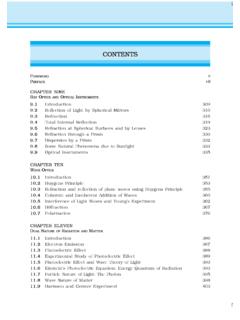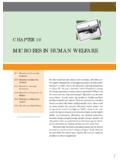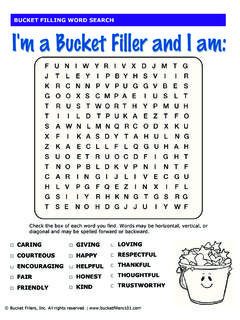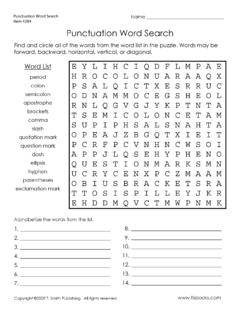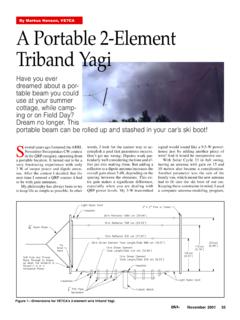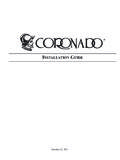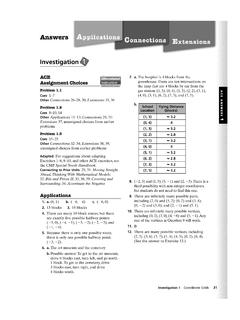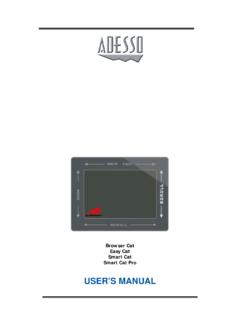Transcription of Theory of Consumer Behaviour - Prashanth Ellina
1 Chapter 2. Theor Theoryy of Consumer Behaviour In this chapter, we will study the Behaviour of an individual Consumer in a market for final goods1. The Consumer has to decide on how much of each of the different goods she would like to consume. Our objective here is to study this choice problem in some detail. As we see, the choice of the Consumer depends on the alternatives that are available to her and on her tastes and preferences regarding those alternatives. To begin with, we will try to figure out a precise and convenient way of describing the available alternatives and also the tastes and preferences of the Consumer . We will then use these descriptions to find out the Consumer 's choice in the market.
2 Preliminary Notations and Assumptions A Consumer , in general, consumes many goods; but for simplicity, we shall consider the Consumer 's choice problem in a situation where there are only two We will refer to the two goods as good 1 and good 2. Any combination of the amount of the two goods will be called a consumption bundle or, in short, a bundle. In general, we shall use the variable x1 to denote the amount of good 1 and x2 to denote the amount of good 2. x1 and x2 can be positive or zero. (x1, x2) would mean the bundle consisting of x1. amount of good 1 and x2 amount of good 2. For particular values of x 1 and x2, (x1, x2), would give us a particular bundle.
3 For example, the bundle (5,10) consists of 5 units of good 1 and 10. units of good 2; the bundle (10, 5) consists of 10 units of good 1. and 5 units of good 2. THE Consumer 'S BUDGET. Let us consider a Consumer who has only a fixed amount of money (income) to spend on two goods the prices of which are given in the market. The Consumer cannot buy any and every combination of the two goods that she may want to consume. The consumption bundles that are available to the Consumer depend on the prices of the two goods and the income of the Consumer . Given her fixed 1. We shall use the term goods to mean goods as well as services. 2. The assumption that there are only two goods simplifies the analysis considerably and allows us to understand some important concepts by using simple diagrams.
4 Spoilt for Choice income and the prices of the two goods, the Consumer can afford to buy only those bundles which cost her less than or equal to her income. Budget Set Suppose the income of the Consumer is M and the prices of the two goods are p1. and p2 If the Consumer wants to buy x1 units of good 1, she will have to spend p1x1 amount of money. Similarly, if the Consumer wants to buy x2. units of good 2, she will have to spend p2x2 amount of money. Therefore, if the Consumer wants to buy the bundle consisting of x1 units of good 1 and x2 units of good 2, she will have to spend p1x1 + p2x2 amount of money. She can buy this bundle only if she has at least p1x1 + p2x2 amount of money.
5 Given the prices of the goods and the income of a Consumer , she can choose any bundle as long as 9. it costs less than or equal to the income she has. In other words, the Consumer Theory of Consumer Behaviour can buy any bundle (x1, x2) such that p1x1 + p2x2 M ( ). The inequality ( ) is called the Consumer 's budget constraint. The set of bundles available to the Consumer is called the budget set. The budget set is thus the collection of all bundles that the Consumer can buy with her income at the prevailing market prices. EXAMPLE Consider, for example, a Consumer who has Rs 20, and suppose, both the goods are priced at Rs 5 and are available only in integral units.
6 The bundles that this Consumer can afford to buy are: (0, 0), (0, 1), (0, 2), (0, 3), (0, 4), (1, 0), (1, 1), (1, 2), (1, 3), (2, 0), (2, 1), (2, 2), (3, 0), (3, 1) and (4, 0). Among these bundles, (0, 4), (1,3), (2, 2), (3, 1) and (4, 0) cost exactly Rs 20 and all the other bundles cost less than Rs 20. The Consumer cannot afford to buy bundles like (3, 3) and (4, 5) because they cost more than Rs 20 at the prevailing prices. 3. Price of a good is the amount of money that the Consumer has to pay per unit of the good she wants to buy. If rupee is the unit of money and quantity of the good is measured in kilograms, the price of goods 1 being p1 means the Consumer has to pay p1 rupees per kilograms of good 1 that she wants to buy.
7 Budget Line If both the goods are perfectly divisible4, the Consumer 's budget set would consist of all bundles (x1, x2). such that x1 and x2 are any numbers greater than or equal to 0 and p1x1 +. p2x 2 M. The budget set can be represented in a diagram as in Figure All bundles in the positive quadrant which are on or below the line are included in the budget set. Budget Set. Quantity of good 1 is measured The equation of the line is along the horizontal axis and quantity of good 2. p1x1 + p2x2 = M ( ) is measured along the vertical axis. Any point in the diagram represents a bundle of the two The line consists of all bundles which goods. The budget set consists of all points on cost exactly equal to M.
8 This line is or below the straight line having the equation called the budget line. Points below p1x1 + p2x2 = M. the budget line represent bundles which cost strictly less than M. The equation ( ) can also be written as5. p x 2 = M 1 x1 ( ). p2 p 2. M. The budget line is a straight line with horizontal intercept p and vertical 1. M. intercept p . The horizontal intercept represents the bundle that the Consumer 2. can buy if she spends her entire income on good 1. Similarly, the vertical intercept represents the bundle that the Consumer can buy if she spends her entire income p1. on good 2. The slope of the budget line is p . 10 2. Introductory Microeconomics Derivation of the Slope of the Budget Line The slope of the budget line measures the amount of change in good 2.
9 Required per unit of change in good 1 along the budget line. Consider any two points (x1, x2) and (x1 + x1, x2 +. x2) on the budget It must be the case that p1x1 + p2x2 = M ( ) and p1(x1 + x1) + p2(x2 + x2) = M. ( ). 4. The goods considered in Example were not divisible and were available only in integer units. There are many goods which are divisible in the sense that they are available in non-integer units also. It is not possible to buy half an orange or one-fourth of a banana, but it is certainly possible to buy half a kilogram of rice or one-fourth of a litre of milk. 5. In school mathematics, you have learnt the equation of a straight line as y = c + mx where c is the vertical intercept and m is the slope of the straight line.
10 Note that equation ( ) has the same form. Subtracting ( ) from ( ), we obtain p1 x1 + p2 x2 = 0 ( ). By rearranging terms in ( ), we obtain x 2 p = 1 ( ). x1 p2. a (delta) is a Greek letter. In mathematics, is sometimes used to denote a change'. Thus, x1 stands for a change in x1 and x2 stands for a change in x2. Price Ratio and the Slope of the Budget Line Think of any point on the budget line. Such a point represents a bundle which costs the Consumer her entire budget. Now suppose the Consumer wants to have one more unit of good 1. She can do it only if she gives up some amount of the other good. How much of good 2 does she have to give up if she wants to have an extra unit of good 1?

